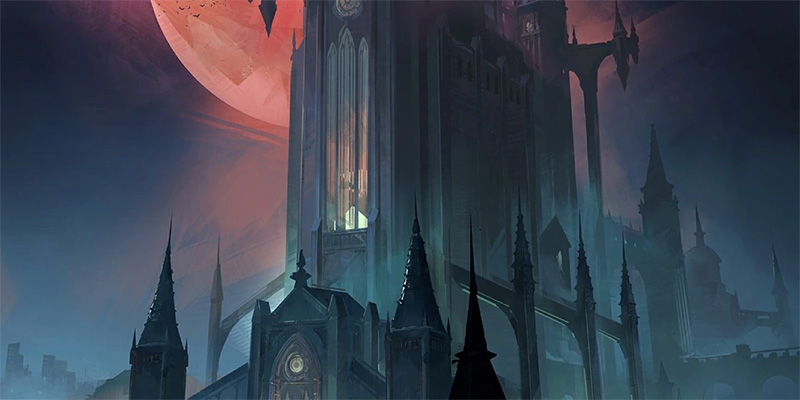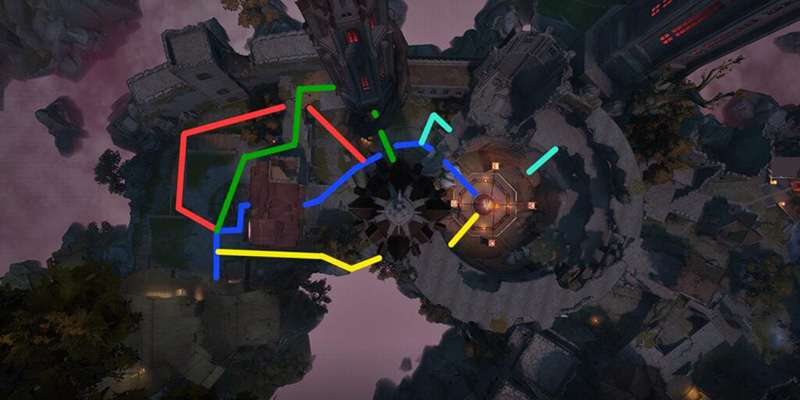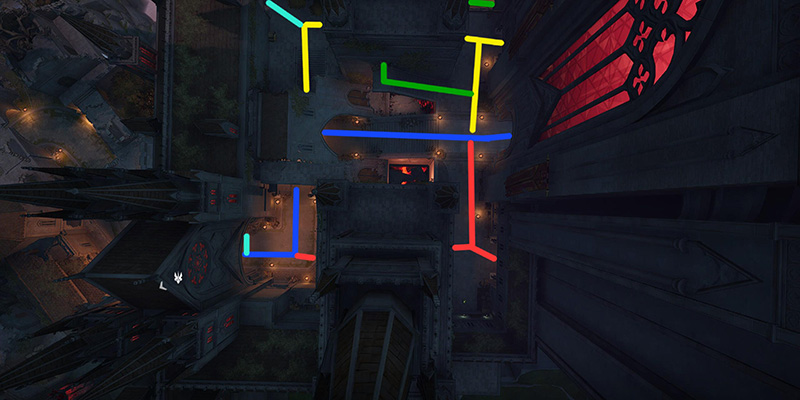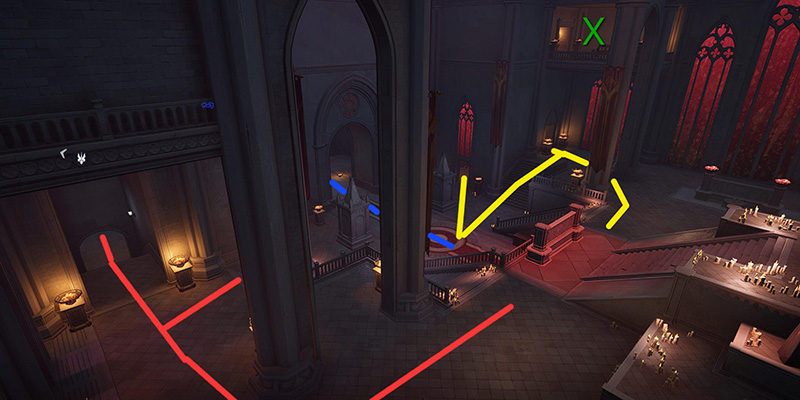Map Overview and Lore
Empire Of Eternal Night: Central Park stands as one of Marvel Rivals' most atmospheric convoy maps, where darkness reigns supreme following a catastrophic event. The Timestream Entanglement devastated New York City, creating the perfect opportunity for Dracula to execute his sinister plan. With a mysterious gift from Doctor Doom and the power of Chronovium at his disposal, the vampire lord halted the moon's movement, plunging the world into perpetual darkness.

This gothic battlefield transforms the iconic Central Park into Dracula's domain, where heroes must navigate through complete darkness to reach his castle headquarters. The map challenges players to traverse treacherous terrain while discovering imprisoned powers that will aid in the final confrontation against the lord of the night.
Map Structure and Objectives
Empire Of Eternal Night operates as a Convergence (Convoy) map featuring a unique three-phase progression system. The match begins with a domination-style objective where attacking teams must secure the ritual site through an initial ambush. Success in this opening phase triggers the convoy's appearance, initiating the second section where teams escort the payload toward Dracula's castle. The climactic third section requires pushing the convoy directly to Dracula himself within his fortress walls.
Securing the Ritual Site

Primary Assault Routes
The opening phase centers around capturing the ritual site, where multiple strategic pathways emanate from the attacking team's spawn location. Each route offers distinct advantages and requires different team compositions to execute effectively.
The Standard Approach (Primary Route)
The most direct path follows the convoy's eventual trajectory, providing straightforward access to the objective. This route serves as the foundation for coordinated team pushes, offering reliable cover positions and predictable engagement distances. Teams utilizing this approach should prepare for concentrated defensive resistance, as most opponents will anticipate and fortify against this obvious avenue of attack.
Alternative Flanking Maneuver (Red Route)
Positioned to the right of the primary approach, this alternate pathway enables teams to circumvent heavily defended positions. The route's primary strength lies in catching defenders off-guard who have committed their attention to the main thoroughfare. Teams executing this flanking strategy can establish crossfire positions with allies pushing through the primary route, creating overwhelming pressure on defensive formations.
Elevated Assault (Green Route)
The high ground advantage becomes accessible through a tower and bridge system that overlooks the objective area. This elevated position provides exceptional sightlines for long-range specialists while offering natural cover from ground-level threats. A strategically placed health kit near the tower entrance eliminates dependency on support heroes for sustaining extended engagements from this vantage point.
Advanced Mobility Route (Yellow Route)
A concealed pathway exists for teams willing to accept significant risk in exchange for complete tactical surprise. This route requires traversing a dangerous gap that demands specific movement capabilities. Heroes with flight abilities, wall-climbing mechanics, enhanced jumping range, or specialized movement utilities can successfully navigate this treacherous passage.
Characters like Captain America can utilize spring jump mechanics to clear the gap, though most support heroes lack the mobility to follow this path. Notable exceptions include Loki and Rocket Raccoon, whose unique abilities enable gap traversal. Teams coordinating with Groot can dramatically expand this route's accessibility, as his wall-placement abilities create stable pathways for any hero to safely cross the chasm.
Reconstruction Pathway (Teal Route)
The most underutilized approach involves accessing a seemingly blocked tower through environmental manipulation. What appears as an impassable dead end transforms into a viable route when players interact with the rewind mechanics by damaging the structure. Successfully triggering the temporal restoration rebuilds the tower, creating internal access for flanking maneuvers.
This route provides dual benefits: horizontal flanking potential and vertical positioning opportunities. Players can either use the tower's interior for concealed movement or ascend to elevated positions overlooking both the bridge system and the primary objective area.
Defensive Considerations
Defending teams who successfully prevent objective capture during this phase unlock achievement rewards, including credits and cosmetic items. This incentive encourages strong defensive coordination and proper utility usage to maintain control of the ritual site.
Advancing on the Castle

Convoy Escort Dynamics
The second phase fundamentally shifts the map's flow as teams must escort the convoy toward Dracula's castle. This transition creates new strategic opportunities while maintaining the established route structure from the previous phase.
Primary Escort Route (Main Path)
The convoy follows a predetermined trajectory that attacking teams must support while defenders attempt to halt progress. This central pathway provides reliable cover positions but becomes increasingly contested as teams approach the castle's fortified positions.
Dual Flanking System (Red and Yellow Routes)
Two primary flanking options enable attacking teams to pressure defensive formations from multiple angles. These routes branch from the main convoy path, allowing coordinated teams to establish crossfire positions that overwhelm concentrated defensive strategies.
The yellow route stands out as the most commonly utilized flanking approach due to its direct connection from the attacking spawn area. However, many teams overlook the elevated extension (teal path) that branches from this route, missing opportunities for superior positioning within the castle's building structures.
Secondary Flanking Access (Green Route)
A specialized back-route becomes available once the convoy reaches the halfway point, enabling left-side flanking maneuvers. This delayed accessibility creates dynamic tactical options that defenders must anticipate and counter as the match progresses.
Defensive Positioning Advantages
Defenders can establish a highly effective vantage point accessible through a specific navigation sequence. By ascending a collapsed wall section and passing through a concealed opening, defensive players gain access to an elevated position that provides exceptional oversight of attacking approaches.
Final Assault on Dracula

Castle Interior Dynamics
The climactic phase transforms the engagement into close-quarters combat within Dracula's cathedral-like fortress. The confined spaces create intense tactical scenarios where positioning and team coordination become paramount to success.
Primary Objective Path (Blue Route)
The convoy's final trajectory leads directly into the castle's interior, where teams must navigate increasingly restrictive corridors while maintaining payload momentum. This route provides the most direct access to the final objective but concentrates combat into predictable chokepoints.
Rapid Flanking Access (Red Route)
A concealed approach offers attacking teams the ability to bypass primary defensive positions with minimal exposure to enemy fire. This route's effectiveness stems from its reduced travel time and limited visibility windows, making it ideal for quick repositioning or surprise engagements.
Tower Infiltration System (Yellow Route)
The most complex flanking strategy involves accessing the castle's tower system through a branching path that connects to the primary objective route. This approach enables left-side flanking maneuvers that can catch defenders positioned to counter main-route advances.
Elevated Overwatch Position (Green Route)
An internal staircase system, accessible exclusively through the tower infiltration route, leads to a critically underutilized vantage point within the castle's upper levels. This position provides exceptional oversight of the final objective area while remaining relatively protected from counter-attacks.
Alternative Access (Teal Route)
A secondary pathway to the main route exists primarily for rotational purposes rather than tactical advantage. However, this route contains an interactive element that unlocks the map's second achievement opportunity, adding value beyond mere positional benefits.
Environmental Hazards and Tactical Opportunities
The castle's interior features a significant environmental hazard in the form of a pit positioned at the convergence of multiple routes. This deadly chasm becomes a tactical focal point where heroes with displacement abilities can achieve devastating results.
Groot's ultimate ability becomes exceptionally powerful in this area, as the displacement effect can pull both attacking and defending players off the objective platform and into the lethal chasm below. Teams coordinating around this environmental threat can turn defensive last stands into offensive opportunities.
Interior Navigation and Access Points
The castle's complex architecture provides multiple entry and exit points that skilled teams can exploit for rotational advantages. A destructible statue within the interior serves as both tactical cover and an achievement trigger when eliminated.
A concealed lower entrance provides dual functionality, offering both tower access for flanking maneuvers and emergency retreat routes back to the main objective area. This versatility makes it a crucial landmark for teams planning complex multi-pronged assaults.
The elevated vantage point accessible through either the tower system or the internal staircase becomes the premier position for long-range specialists and support heroes like Loki who prefer engagement distances. The position's dual access routes provide flexibility for both initial positioning and emergency evacuation.
Achievement Opportunities
Empire Of Eternal Night: Central Park offers multiple achievement unlocks that provide both progression rewards and strategic objectives:
Successfully defending the ritual site without allowing attackers to capture the initial objective unlocks rewards including credits and cosmetic items.
Destroying the specific statue within the castle interior triggers the map's second achievement, providing additional progression rewards while potentially eliminating tactical cover for opponents.
Strategic Recommendations
For Attacking Teams
Successful assault strategies require understanding each phase's unique demands and adapting team compositions accordingly. Phase one benefits from mobility-focused heroes who can exploit the advanced flanking routes, particularly the gap-crossing pathway that enables complete positional surprise.
Phase two demands sustained pressure through multiple approach vectors, making heroes with area denial and displacement abilities particularly valuable for controlling the convoy's advance rate.
The final phase rewards close-quarters specialists and heroes with environmental interaction capabilities, as the castle's confined spaces and environmental hazards become primary tactical elements.
For Defending Teams
Defensive success stems from understanding the transition points between phases and establishing fallback positions before they become necessary. The elevated positions throughout each phase provide consistent advantages for long-range specialists and support heroes.
Understanding the various flanking routes enables defenders to establish counter-flanking positions and maintain situational awareness even when committing resources to primary chokepoint defense.
- Multiple viable routes per phase
- Environmental interaction opportunities
- Progressive difficulty scaling
- Achievement integration
- Complex navigation requirements
- High mobility hero dependency
- Environmental hazard risks
- Three-phase adaptation demands
This comprehensive understanding of Empire Of Eternal Night: Central Park's tactical landscape provides the foundation for mastering one of Marvel Rivals' most atmospheric and strategically complex battlefields.
